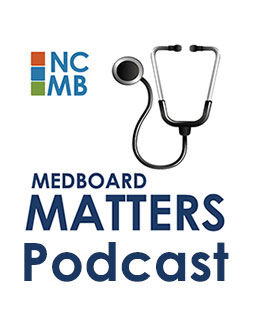PA site visits in 2011 find more in compliance, fewer serious problems
Categories: Bulletin Board Comments: comments Print Friendly Version | Share this item
Physician assistant site review results for 2011 show a nearly 10-point increase in the percentage of site visits that found PAs in full compliance for NCMB rules regarding supervision of mid-level practitioners. In addition, the percentage of site visits that resulted in Board action dropped by three points.
The NCMB has conducted annual PA site reviews since 2005 to ensure compliance with administrative rules regarding the supervision of midlevel practitioners. The Board reviews a certain number of PAs, who are selected at random, each year. Starting in 2010, the NCMB began publishing the results of its PA site visits. Results from 2011 are below.
2011 PA site visit results
Sixty-nine percent of physician assistants/sites reviewed in 2011 were found to be in full compliance with Board rules. In 24 percent of sites reviewed, the Board noted one or more instances of noncompliance. However, in all such cases the PAs corrected the noted discrepancies and the Board took no formal action against their licenses. In 2010, 30 percent of PAs/sites reviewed fell in this category. In the remaining 7 percent of sites reviewed in 2011, the Board issued confidential Private Letters of Concern (PLOC) to the PAs. In each of these cases, PAs could not produce the required documentation of quality improvement meetings with their supervising physicians.
Areas of noncompliance
PAs continued to struggle in 2011 with the same few aspects of the NCMB’s supervisory rules that have come up in previous years. Issues noted include:
Are you in compliance?
Don’t wait to be selected for a site review to make sure you are in full compliance with supervisory rules. Review the PA rules and regulations. A complete description of the information PAs should expect to provide during a compliance review is available on the PA Site Visit Checklist.
PA site visits: How they work >PAs selected for review are notified in advance by a Board investigator, who schedules a face-to-face meeting. The PA is asked to produce certain documents that must be kept on file at the PA’s practice location. The Board investigator also asks the PA a series of questions regarding his or her practice arrangement, such as how frequently he or she has one-on-one direct contact with the supervising physician.
The NCMB has conducted annual PA site reviews since 2005 to ensure compliance with administrative rules regarding the supervision of midlevel practitioners. The Board reviews a certain number of PAs, who are selected at random, each year. Starting in 2010, the NCMB began publishing the results of its PA site visits. Results from 2011 are below.
2011 PA site visit results
Sixty-nine percent of physician assistants/sites reviewed in 2011 were found to be in full compliance with Board rules. In 24 percent of sites reviewed, the Board noted one or more instances of noncompliance. However, in all such cases the PAs corrected the noted discrepancies and the Board took no formal action against their licenses. In 2010, 30 percent of PAs/sites reviewed fell in this category. In the remaining 7 percent of sites reviewed in 2011, the Board issued confidential Private Letters of Concern (PLOC) to the PAs. In each of these cases, PAs could not produce the required documentation of quality improvement meetings with their supervising physicians.
Areas of noncompliance
PAs continued to struggle in 2011 with the same few aspects of the NCMB’s supervisory rules that have come up in previous years. Issues noted include:
- The PAs prescription blank did not contain his/her approval/prescribing number, DEA number, name and/or supervising physician’s name as required by Rule 21 NCAC 32S.0212 (5) (a) and (b).
- The PA did not have a dated and signed back up supervising physician list as required by Rule 21 NCAC 32S .0215 (b). This rule requires the PA to keep a current list that includes approved back-up supervising physicians, signed and dated by each back-up supervising physician, the primary supervising physician and the PA. This list must be retained as part of the Supervisory Arrangement.
- Statement of Supervisory Arrangement lacked a clear explanation of the physician’s supervision of the PA as required by Rule 21 NCAC 32S .0213 (b). The rules states, “Each team of physician(s) and physician assistant(s) shall ensure that the physician assistant's scope of practice is identified; that delegation of medical tasks is appropriate to the skills of the supervising physician(s) as well as the physician assistant's level of competence; that the relationship of, and access to, each supervising physician is
defined; and that a process for evaluation of the physician assistant's performance is established.” - Quality Improvement meeting documentation was not signed and/or dated by the PA and/or supervising physician as required by Rule 21 NCAC 32S .0213 (d), which states, “a written record of these meetings shall be signed and dated by both the supervising physician and the physician assistant.”
Are you in compliance?
Don’t wait to be selected for a site review to make sure you are in full compliance with supervisory rules. Review the PA rules and regulations. A complete description of the information PAs should expect to provide during a compliance review is available on the PA Site Visit Checklist.
PA site visits: How they work >PAs selected for review are notified in advance by a Board investigator, who schedules a face-to-face meeting. The PA is asked to produce certain documents that must be kept on file at the PA’s practice location. The Board investigator also asks the PA a series of questions regarding his or her practice arrangement, such as how frequently he or she has one-on-one direct contact with the supervising physician.
